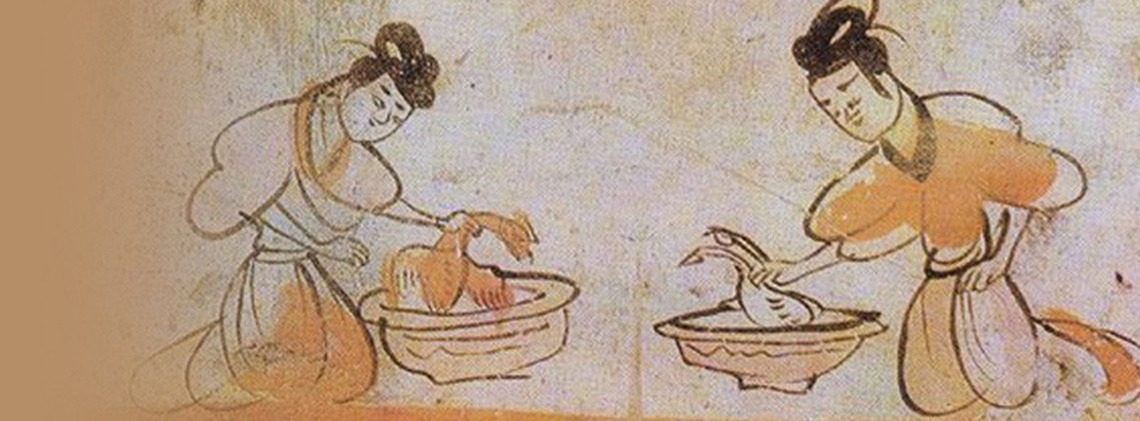
Chinese Culinary Culture and Eight Regional Cuisines
Splendid
Chi Culture
Topic
Chinese Culinary Culture and Eight Regional Cuisines
There is an adage in China that goes: “food is the staff of life.” The Chinse believe that eating is the most important thing in a person’s life. It is commonly said that the seven necessities of life are firewood, rice, oil, salt, soy sauce, vinegar, and tea. Each of these is related to food or drink. Every region of China has its own distinctive foods with unique flavors; together, these form the famous “eight cuisines” of China.
Over the past four or five thousand years, people’s lifestyles and food production methods have changed greatly. They have gone from gathering to hunting or fishing; from raw foods to cooked; from unprocessed grains to milled; and from the monotony of eating only locally produced food to eating food produced in a wide range of other regions.
Once there is an adequate supply of food, eating is no longer merely about sustenance but also about pleasure. People did not only demand high quality foodstuffs, they also demanded other, seemingly irrelevant things. These included, for example, combining the five flavors in harmonious proportions; the unity of the color, shape, taste, and texture of the food; matching delicious food with beautiful containers; and giving elegant names to the sumptuous dishes. Most of these requisites came from pursuing a certain fullness of vitality and spirit.
The diet of a people is not simply a physiological phenomenon; it is also cultural. Economic status, social environment, education, and religious belief all have a decisive effect on a culture’s food. Ancient society was like a pyramid: the imperial court sat on the top, followed by rich and powerful clans and families, the literati and the scholar-officials, ordinary people, and finally the peasants of the lowest social status sat at the bottom. There can be a large difference between the food and tableware of one social class and that of another. Despite this, food fulfills an important physiological and spiritual need for everyone.
Furthermore, because eating is the most frequent and the most important thing in one’s life, there are many rituals and taboos associated with it. On special occasions, especially during Chinese New Year or on festive celebrations, these taboos can increase several folds. Depending on the ethnicity and locality, a taboo in one community or a certain ethnic group might be a welcomed behavior in another community or among a different ethnic group.
China is a vast territory, rich in natural resources and with a great diversity of climates, water, products, and customs. For these reasons, it is not surprising to learn that different habits and cuisines have emerged. Chinese cuisine is typically characterized as “sweet in the south, salty in the north, hot in the east, and sour in the west.” Strictly speaking, each province, each region, even each county, has its own distinctive dishes. However, “cuisine” requires not only a certain number of dishes but the knowledge to select the ingredients, use the condiments in the best way, and the ability to perform unique cooking techniques. Moreover, all local cuisines have their own inherent integral qualities. Chinese cuisines are generally divided into eight regional varieties: Imperial court, Shandong, Huai’an and Yangzhou, Jiangsu and Zhejiang, Sichuan, Fujian, Guangdong, and Hunan-Hubei.
Although Hong Kong is located in Guangdong province, Hong Kong’s culinary culture comes not only from Chinese and Western traditions, it is also infused with a variety of Asian customs as a result of the island’s historical role in the region. For example, the tea and dim sum habit of Hong Kong derives from the old business culture of Guangzhou. In fact, however, Hong Kong dim sum is constantly changing and being recreated. It has spread all over the world with the diaspora of Hong Kong immigrants; in this way, tea and dim sum have come to represent Hong Kong’s culinary culture.



